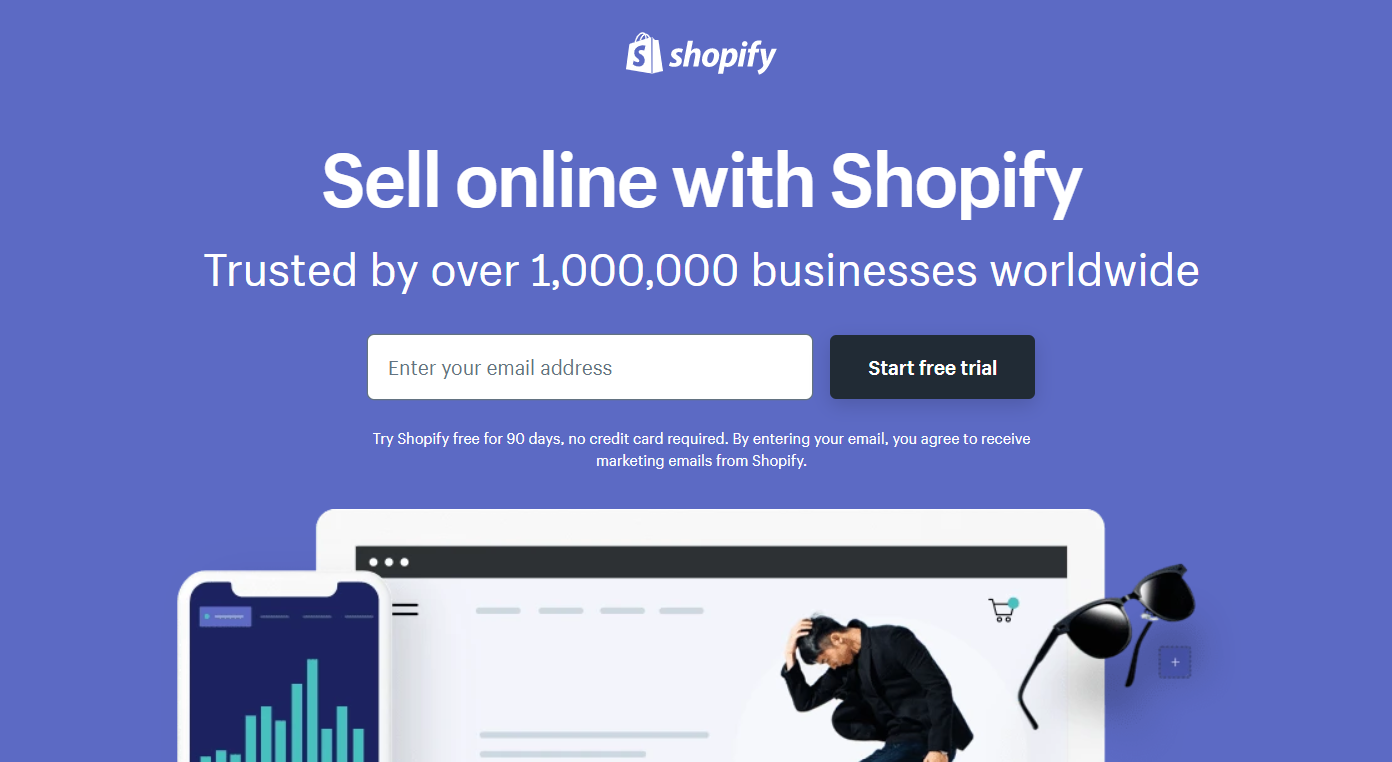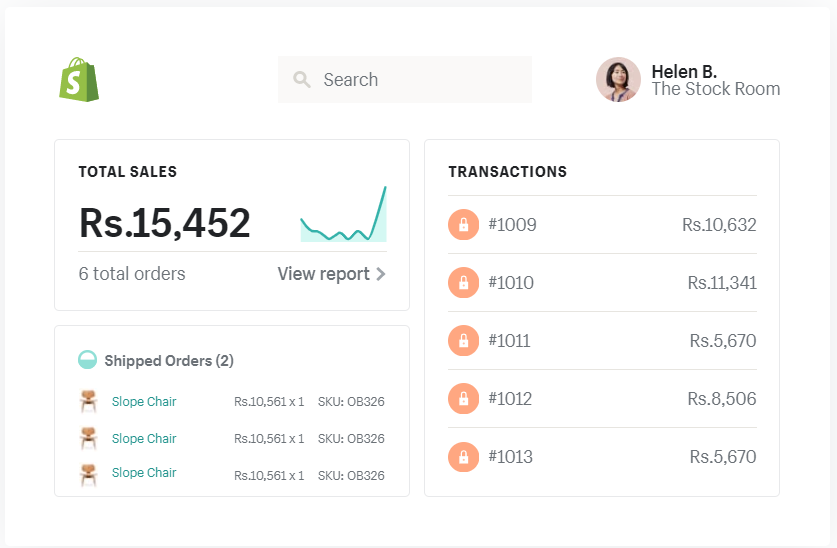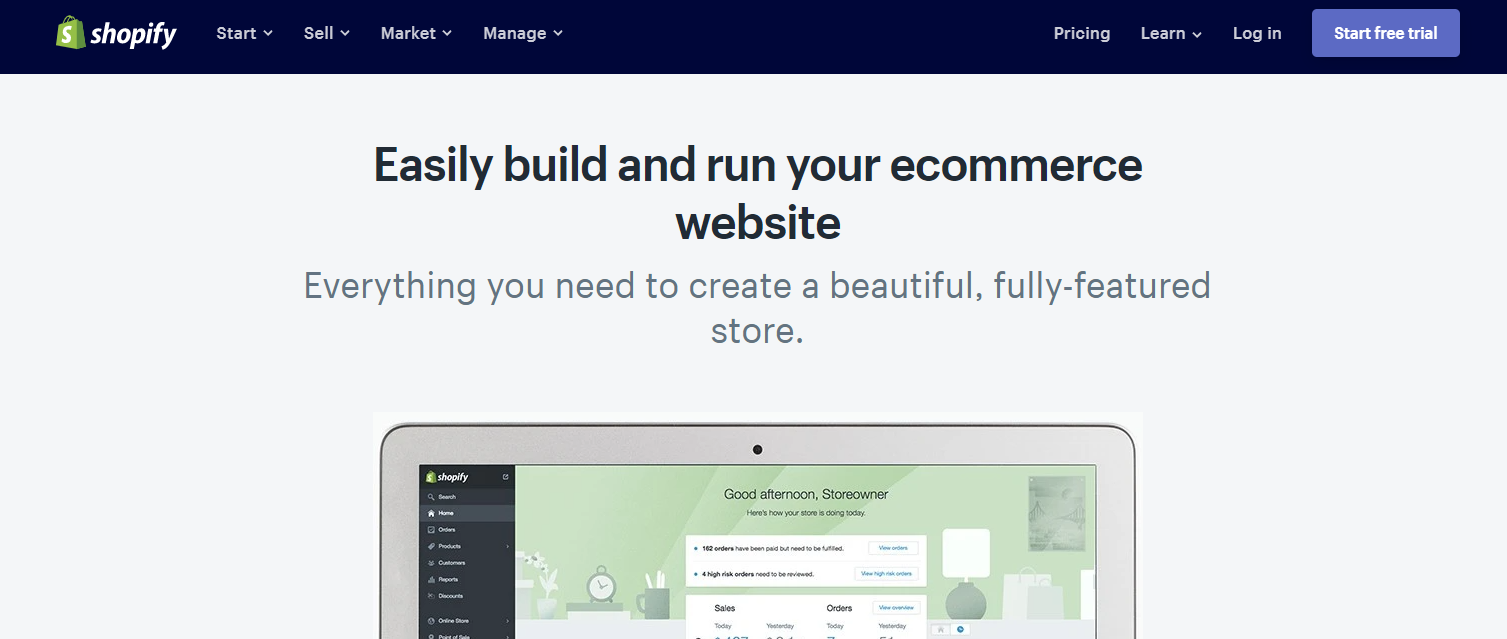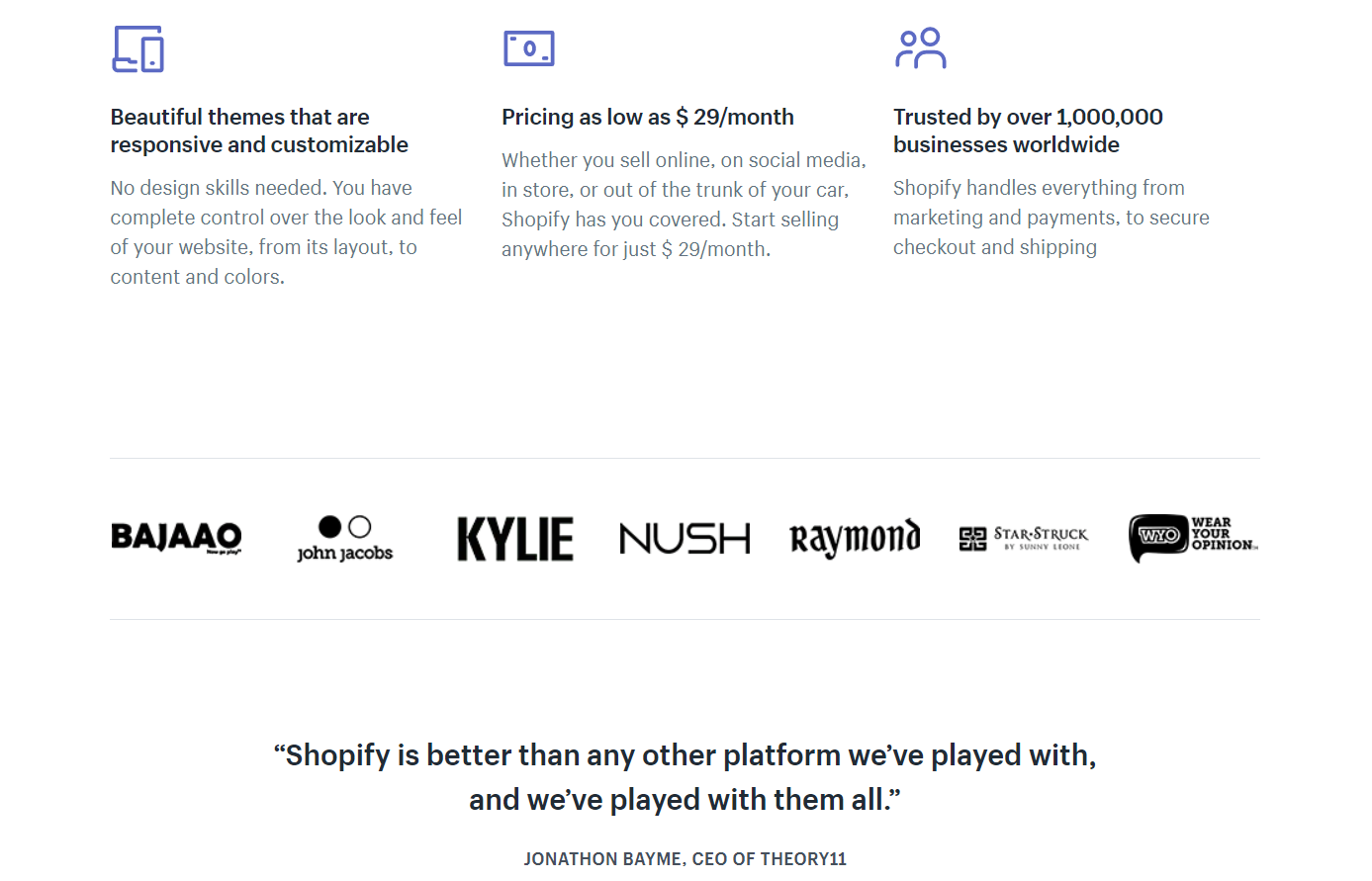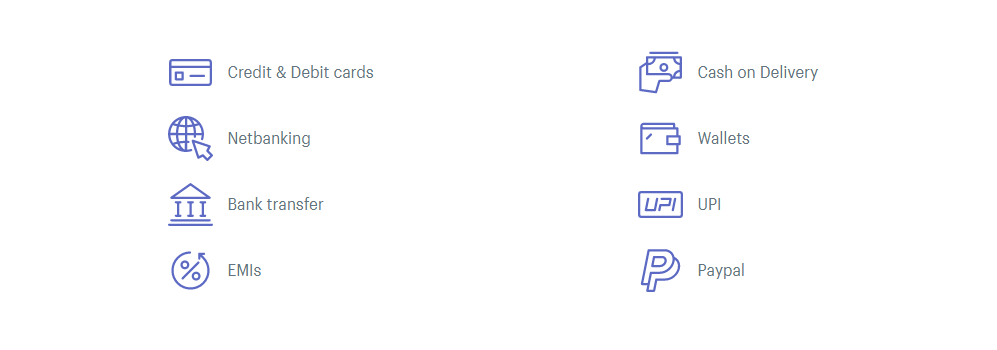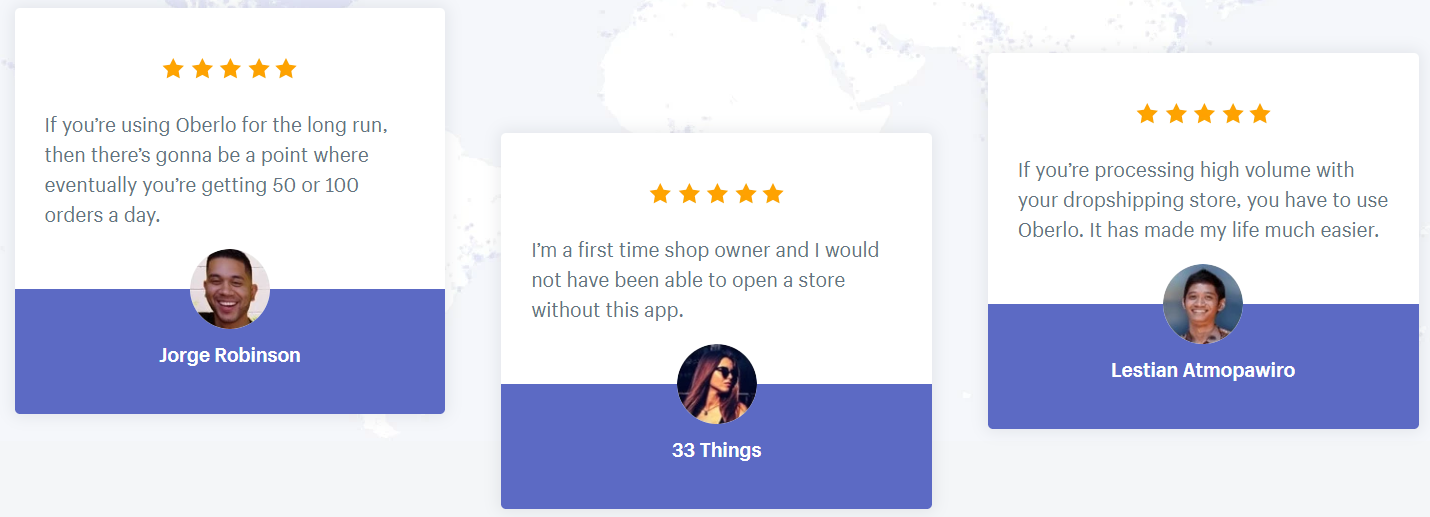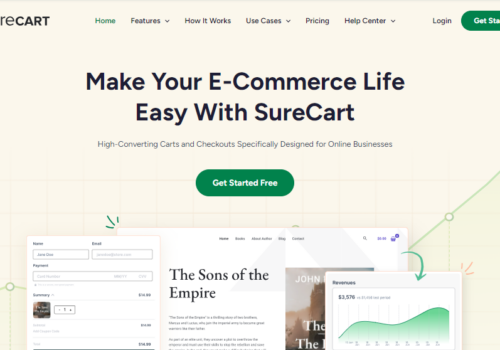The e-commerce sector in India has seen a widespread growth in the last 5 years, particularly driven by internet penetration and the booming smartphone industry. The introduction of affordable internet connections acted as a blessing for the e-commerce industry because people are now comfortably purchasing products and accessories online from anywhere, anytime. This has encouraged even small retailers to join the field of e-commerce. Market figures say that the Indian e-commerce market is rising at a rate of 25% each year and is all set to reach the $100 billion mark by 2022.
Benefits of selling online in India!
Most small and medium-sized retailers in India are realizing the advantages of e-commerce, adopting the latest trends of bringing the company online. Hence, they are able to mark the steps of their new business journey with their online stores. Selling online in India will help you in more than a few ways. Some of the key benefits include:
- Flexibility
- Faster order processing
- Reach to a greater audience
- More low-cost marketing channels
- Easier Order Management
- Attractive growth opportunities
Setting up your e-commerce business!
Ultimately, how you would like to set up your new e-commerce company is based on your business model and requirement. There are two easy choices to choose from when setting up your company online:
- Building your own e-commerce Website
- Joining an established e-commerce Marketplace
Building Your Own E-commerce Website
Getting your own online shop will help you create your own brand identity and it’s a really good long-term business strategy! Many people may think that starting their own e-commerce venture can be slightly difficult, to begin with as it will involve website creation, integration of payment gateways, online marketing set-up, implementation of logistics, and more. However, as hard as it may sound, Shopify is one solution that makes doing all of these things literally an easy and joyful experience. You’ll get to know how later on in this post!
- 3 Things to Keep in Mind Before Designing an eCommerce Website
- Ecomlad Coupon Code
- Get Started With Dropified Here
- Get Started With Seller Snap
Joining an established e-commerce Marketplace (How To Start Ecommerce Business In India 2024 (Step By Step)
Being a member of an existing e-commerce platform is a comparatively easy way to start selling your goods online. To become part of a platform for e-commerce, all you need to have is a bank account and a tax registration number so you can easily apply. The marketplace will take care of everything, i.e. website design, website creation, technology, marketing, payment gateway, etc. A seller can also enter several e-commerce marketplaces to mark their online presence, making it easier for them to launch their online company.
However, you do also need to be very sensible while working through this. While marketplaces make it easy to get started, you don’t own those customers or the traffic and sometimes these marketplaces can under-price you. Building an online store is building your own sustainable brand for the future!
About Shopify!
More than 90% of the e-commerce world is well versed with the name Shopify and what role it can play in setting up a successful e-commerce business. Shopify Inc. is a multinational e-commerce company that owns its proprietary E-Commerce platform designed specifically for online stores and retail point-of-sale systems. Online retailers and store owners can make use of this platform to incorporate important e-commerce services’ into their businesses to simplify the process of operating an online store for small merchants, including payments, promotions, delivery, and customer engagement tools.
Shopify has been the most used e-commerce platform since quite a few years now, when they recently announced that their coverage had now spanned across 175 countries catering to more than 1,000,000 companies as of June 2019. Their total gross merchandise volume exceeded $41.1 billion for calendar 2018, making them the largest e-commerce platform and a global leader in this field.
There are a lot of benefits that you can glean out of Shopify, when we enlighten you on how to use the platform to build your own e-commerce website, further on in this article!
Start Your Own E-commerce Business in India!
The e-commerce industry is pushing the Indian economy through the next phase of change and if you’ve been dreaming of wagging a foot into its realm of limitless profits then the clock is ticking. The time to start your own e-commerce company in India is ripe. You are ready, then? Here is a step-by-step guide on how to start your own Indian e-commerce company.
Step 1: Figure out the perfect business model!
The first thing you will do is think long and hard about narrowing down on the ideal marketing strategy for e-commerce and the business model for e-commerce. As Tobias Lutke says: “E-commerce isn’t an industry; e-commerce is a strategy.”
You can opt for two styles of business models. You can go either with a single vendor or an e-commerce store with multi-vendors. To this end, you can either have a single product line, or you can have multiple product lines depending on the budget you set for your e-commerce company.
Single-vendor marketplace
The benefit of going for this type of business model in e-commerce is that it only includes two people-a single vendors selling their product to multiple customers. To this end, keeping track of the transactions between the two companies is not only simpler, but overhead costs are also lower as you only have to pay one supplier and you do have greater control over the product at hand.
Multi-vendor marketplace
This form of the model allows multiple vendors to sell their goods to different buyers, with the vendors all needing to register with your platform. It is important to remember here that you can choose to either sell yourself a unique product, either through your own online business or a similar site, or you can choose to allow other sellers to sell their goods in your shop. You could be collecting large margins in the first case. In the second, every time one of the sellers registered with your brand makes a good sale you can receive a commission.
Step 2: Branding your brand!
If you have chosen the business model you want to adopt to develop your e-commerce company and have narrowed down on the product or products you want to sell, as well as the target market you want to sell to-the next move is to find the perfect brand name. Your brand name should at least have the following characteristics:
- Short and easy to remember
- Reflective of your brand
- Unique and catchy
- Should not have another meaning in another language
How To Launch & Create Profitable Shopify Store Within 15 Mins
You can also come up with a finished concept for your company logo along with this. Once you’ve decided on a brand name and its logo, the next step is to shape your company. There are usually four common kinds of enterprises in India:
- A sole proprietorship (no limitation of liability)
- One-person company
- Limited liability partnership (LLP)
- Private limited company
Of course, the type of training you choose to undergo depends on whether you want to run the business individually or whether you want to bring in more investors. This is relevant because if you have chosen a corporate or partnership-based arrangement, you are required to file tax returns and have a number of tax ID.
This model’s online company requires an Employer Identification Number (EIN) to open a business bank account, so business taxes can be paid in the next financial year. EIN is a unique identifying number for your company. However, if you have opted for the sole proprietor model, you do not need to have a tax identification number. Then, use the assigned Social Security number.
Step 3: Register your e-commerce business
Now comes one of the most important parts to start your e-commerce company in India-to register and complete all the legal formalities for the same. Apply for the Director’s Identification Number (DIN), which can be accessed from the official Ministry of Corporate Affairs website using the DIN verification form (DIN 3). You may also request DIN online, simply by downloading and uploading the appropriate documents.
Keep your Permanent Account Number (PAN) and Digital Signature Certificate in place. After you have issued the DIN, you should apply to the Registrar of Companies (ROC) to verify if the name you have selected for your company is valid. This can also be achieved by testing it on the Ministry of Corporate Affairs’ official website.
You will incorporate the proposed company within six months of obtaining a confirmation of the name. You do have the right to renew the company name, by paying any tax. Apply for the certification of Goods and Service Tax (GST), Shops, and Establishment License-required in Payment Gateway Integration cases-and Technical Tax (PT) cases.
Apply to open a Provident Fund (PF) with the appropriate Provident Fund Organization; register with the Employee State Insurance Agency for workplace medical benefits and finally apply for Business Incorporation Registration, where the business is legally licensed under the Company Act, 2013.
Step 4: Opening a bank account
If your business is registered officially under the Act, you will need to open a bank account for the same. The account can open with any bank but must be opened in the company’s official name. If you’ve chosen the proprietorship model for your online business, you’ll need to get GST registration, which will enable you to open a bank account on behalf of your online business. In this case, you will list the items you will be selling on your e-commerce website until your bank account is ready, to obtain and then operate a payment gateway.
Step 5: Build your e-commerce website
You can either use a pre-built platform or build it from scratch while setting up your website. All have distinct benefits, but the most preferred choice is typically to create a website from scratch.
- Using a pre-built platform
Now the majority of people generally choose to create their website on pre-built platforms such as WordPress and Wix, primarily because they give you readymade models-designed to fit the type of online company you want to run, models which are also easy to customize. But, here’s the thing, platforms like WordPress and Wix are good, but they are not an ideal option for eCommerce businesses. Every platform suits a particular niche, and when it comes to building an eCommerce website, then the best and easiest platform to use is Shopify! For example, if your eCommerce is about fashion, then Shopify will display you just the right templates you will need to build a website that’s vibrant, with lots of visual material, including a page to position shipping orders.
- Construct a website from scratch
Building your eCommerce website on a SaaS platform like Shopify will allow you to craft your site in the way you envisioned it. You get just the right tools to design your entire website-just the way you want it to be. Shopify is perhaps the most favored option for those looking to create websites for their e-commerce business. There ARE A LOT OF BENEFITS YOU CAN FETCH OUT by building your e-commerce website using Shopify. First and foremost, you will have complete control over the overall appearance of your website. Everything from its layout, to content and colors, will be yours to handle. Plus, you don’t even need any design skills to do all this!
Next, whether you sell online, on social media, in-store, or out of the trunk of your car, Shopify has you covered. Start selling anywhere for just $29 per month. Shopify will also handle every key aspect of your e-commerce business, including marketing and payments, to secure checkout and shipping. To know more about what all benefits you can glean out of the platform, just visit the official Shopify website right away!
Now, you have to note that it is your website that visually reflects your entire company-the the pioneer to the entire online sector. Therefore, no amount of detail is too minimal-from the color to the font, and photographs-everything can tell your brand a small part of the story.
To this end, there are a few things you need to remember when launching the official website of your company: you need to determine whether you want to manage it on your own or employ a professional on a regular basis to supervise and run it. You need to make sure several posts are posted and shared on your website-be its descriptions of the services that your e-commerce company provides or clear pictures of your goods.
Step 6: Payment gateways
To make your online business profitable, you need to set up payment gateways, as this will allow the processing of credit cards, debit cards, net banking, and cash card transactions through the e-commerce website. For your e-commerce company to be granted a payment gateway, you need to send the following documents:
- Bank account in the name of the business
- PAN card of the business
- Certificate of Incorporation
- Memorandum of Association
- Articles of Association
- Identity proof
- Address proof
- Website terms of use
- Website privacy policy
When all of these documents have been submitted, you will be provided with a payment gateway for your online company, through which you can allow online payments.
Paytm and RazorPay are the most common payment gateways used in India, with many businesses also including PayPal as a gateway option as well. Apart from these options, Shopify does also offer payment gateway options for Shopify eCommerce stores in India, details of which you can find on Shopify
Step 7: Logistics
This move is key to the successful conduct of an e-commerce company in India. The method of delivering an order to a customer or bringing an inventory to a retailer is referred to in logistics. This method also keeps track of the shipped goods in transit, before they are delivered to the appropriate customer. To this end logistics management includes the process of working with the position and recognition of distributor companies. Most e-commerce business owners tend to outsource their logistics to a third-party transportation and storage service.
Here is a further explanation of the logistics process. When a customer completes his or her order on your website, a notification will be sent to you via inventory software (which is used by most e-commerce companies). When the notification is authenticated, the product in question must be dispatched. To this end, you can connect up with a third party supplier and delivery service, so that when a customer makes an order the third party will then be informed immediately so they can send the package out quickly.
This is the method that is more structured, but generally applies when your online business is slightly larger, and you first collect enough capital to link with a distribution service. However, if your company is smaller – for example, if you run the website from home or a different office and shop inventory there, you only need to bundle the product in question and deliver it directly to the customer. It would save you the additional costs of getting the distribution process outsourced to a third party.
Step 8: Attracting customers to your website!
The former CEO of Walmart, Joel Anderson once said:
“You can’t just open a website and expect people to flood in. If you really want to succeed you have to create traffic.”
That is absolutely true, coming from an e-commerce giant! It truly does make sense. Your audience is already out there. All you need to do is find the right bait to reel them into exploring your business and becoming potential customers. So, you need to be able to actively handle the following key elements to attract more customers to your business:
-
SEO marketing
Marketing strategy for search engine optimization (SEO) is the world’s way at the moment and will continue to influence the future of smart marketing. Grabbing the attention of potential online buyers is key to your e-commerce business’s success. It is here that SEO tactics come in. SEO helps to place you on the chart of search engines. And with 44 percent of online shoppers start browsing with a search engine, you have to be on their radar.
-
Picking the right keywords
Approximately 700,000 Google searches are performed in the span of one minute according to estimates. You need to come up with a tailored keyword list to ensure you appear in these searches. There are various kinds of keywords you need to use to make your online company appear in the search engines. One sort is keywords between 0-26 characters, typically referred to as ‘head terms.’ The other, are those which are more common between 26-40 characters.
-
Advertisements
Advertisements are another path you will take to catch the eyeball of your customers. On platforms like Facebook and Instagram, you can opt for the ‘paid ad’ option and pay a certain amount of money for these sites to advertise your ads on regular feeds for users. When those users click on the ad and are led to your website, turning them into a potential customer is your task.
-
Promotions
Although this isn’t the most realistic thing to do with online customers in India at the initial stages of starting your e-commerce business, sales and promotions sell like hotcakes. You may publish posts and bulletins on social media about these sales.
-
Retargeting
Retargeting is a mechanism in which a cookie is placed on the computers of those who once visited your site but left without purchasing something. If the cookie has been put, and when such online users visit another website displaying ads from the retargeting network, they will then see your ad. While this is a costly route to follow, it typically produces good results.
-
Word of mouth
If you don’t have that many resources to invest in expensive routes like advertising, when you’re starting out, then you can always turn to the oldest practice of making sure that business is being spoken about – word of mouth.
There are many other similar routes that you can seek as well, and with the constantly evolving nature of the Indian e-commerce market and the growing social media, dominance-you can always find a way to connect with potential customers who are the factors that make or break your online business.
Pricing Plan
Shopify Customer Reviews
Quick Links:
- eCommerce Migration: The Definitive Guide & Checklist
- 6 Best Ecommerce Platforms: Shopify Vs Volusion Vs BigCommerce Vs Big Cartel Vs Ecwid
- Shopify e-Commerce Stores – How People Making 100000$ Per Month
Final verdict: How To Start Ecommerce Business In India 2024 (Step By Step)
To sum up, starting an e-commerce company in India is a great idea, particularly right now, given that the market for it is flourishing. But you’d better brace yourself because it’s not going to be as easy as it may seem. When it comes to trying to register and legalize your online business, you can face hurdles. So, if you fight this and get the company noticed, you’re going to face a reasonable share of the pressure from people like you who want to become the next Jeff Bezos.
What you need is your own dream, an almost foolproof strategy for how this dream can be implemented, and the courage and determination to see it through to the end. The e-commerce world in India is your well of infinite possibilities at this moment. That being said, there should be no thinking twice for you to sign up for Shopify and start building your eCommerce store. Just jump into their official website and go for it!

